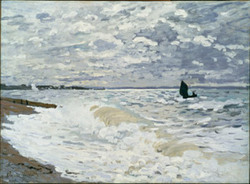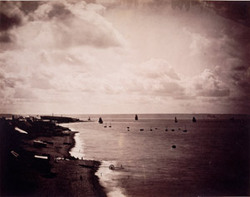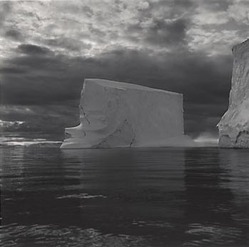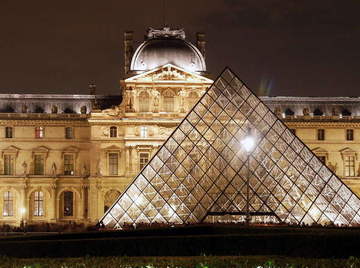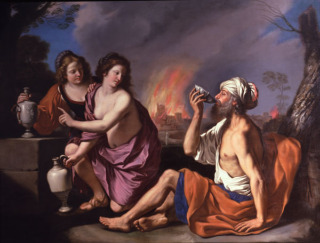 For 50 years, the Toledo Museum of Art has coveted a painting by Bolognese master Giovanni Francesco Barbieri, known as Guercino (“the squinter”). Not just any work, because it had to both fill a gap and rise to the level of the rest of the museum’s 17th Century painting collection. In fact, Toledo hasn’t purchased an Italian baroque painting since 1983, when it purchased Lot and His Daughters by Artemisia Gentileschi.
For 50 years, the Toledo Museum of Art has coveted a painting by Bolognese master Giovanni Francesco Barbieri, known as Guercino (“the squinter”). Not just any work, because it had to both fill a gap and rise to the level of the rest of the museum’s 17th Century painting collection. In fact, Toledo hasn’t purchased an Italian baroque painting since 1983, when it purchased Lot and His Daughters by Artemisia Gentileschi.
But in 2009, by coincidence, the museum learned of a beautiful Guercino of — Lot and His Daughters. In October, it bought the work (above), and at 7 p.m. this Friday, Jan. 22, it will unveil it to the public in a special ceremony. The museum has rehung the gallery, and for now is putting the Guercino in the spot of honor, normally occupied by Rubens’s Crowning of Saint Catherine.
How did this stroke of luck occur? It is one of the Five Questions I posed to Lawrence W. Nichols, curator of pre-1900 European and American Art at the Toledo Museum:
1) How did this painting, perfect for the collection, come to be offered to the museum?
In January 2009, two dealers scheduled an appointment to see me and the collection. The New York dealer had been to Toledo in the past, but his Florentine partner had not. The dealers asked me what I was looking for, and I gave my standard answer — “show me the best you have.”
We discussed gaps in the collection, including our need for a Guercino with the size, presence and quality to hold its place in the Great Gallery. As coincidence had it, very shortly thereafter they came to represent a private Italian collector who wanted to sell his Guercino, Lot and His Daughters. In early March, they sent me an email with a picture of the work.
I was very excited by the image. I went to New York to see the painting, and after months of research, I received the go-ahead to bring the painting to Toledo on loan. We acquired it on Oct. 1.
2) Briefly, can you say what this purchase does to lift your collection?
The TMA has a painting by Guido Reni and now we have the other major 17th-century Bolognese painter represented in a major way. The condition of the canvas is remarkable, and in our Baroque gallery it immediately comes to rival our great Rubens, Preti, Poussin, and Valentin. I was holding out for scale, condition, and proverbial “wall power.” This does this, and then some.
3) What should viewers look at, as they compare the two works?
[Read more…] about Toledo Scores The Perfect Guercino: Five Questions For The Curator

